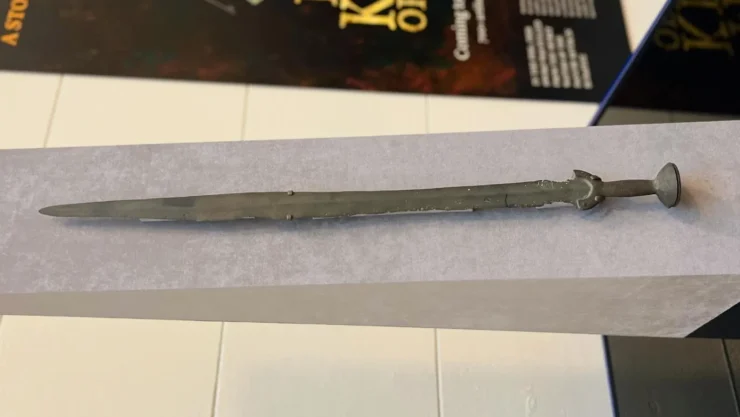A sword that is believed to be an expertly crafted duplicate of a Bronze Age weapon has been kept in the Field Museum of Natural History in Chicago for almost 100 years. But according to a recent research, the replica sword, which was manufactured roughly 3,000 years ago, is real.
A replica sword kept by the Field Museum was requested for a deeper examination by Hungarian archaeologists collaborating with the museum in order to prepare for an exhibition on the first rulers of Europe that will be presented in March. An X-ray fluorescence detector was used to investigate the sword, which was discovered in the Danube River in Budapest, Hungary, in the 1930s.
To do this, researchers must first ionize the materials they are researching using X-rays.
Materials scientist Maido Merisalu said that: “If the energy of this radiation is sufficient then it will interact with the atoms’ inner shell electrons causing them to be kicked out. Almost immediately, a relaxation process takes place where one of the outer shell electrons falls into the inner shell.”
“As a result, a specific amount of energy is released in the form of electromagnetic radiation. The energy of the emitted X-rays depends on the energy difference between the higher and lower states, and therefore the radiation also carries information about the atom.” he added.
According to the news of IFL Science, scientists can determine the composition of a material by measuring the energy and intensity of the X-ray radiation that exits the substance. The scientists discovered that the sword has a comparable composition of bronze, copper, and tin to other Bronze Age swords unearthed in Europe.
“Usually this story goes the other way round. What we think is an original turns out to be a fake.” said Bill Parkinson who is the curator of anthropology at the museum.
The researchers discovered the sword to be about 3,000 years older than initially believed, but it was too late to include it to the First Kings of Europe exhibition. As a result, it will now be on show in the main hall as a preview of the exhibition. They hypothesize that the blade may have been immersed in the Danube as part of an old rite, either in remembrance of a loved one who has passed away or a conflict.
Cover Photo: CNET
